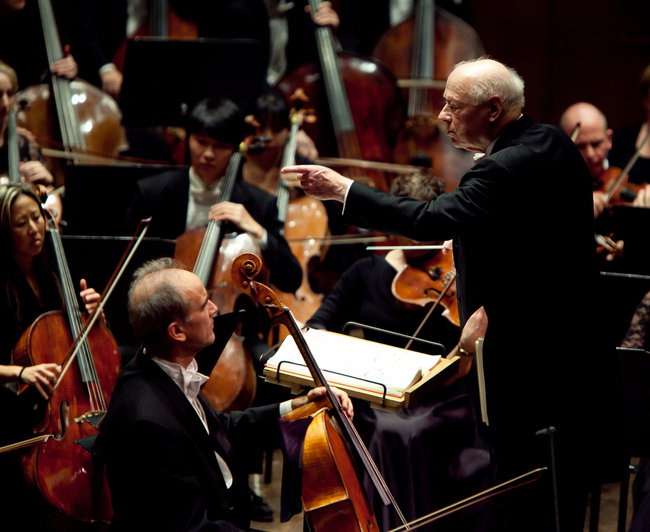|
Back
A Laudable Guest Leads the New York Philharmonic New York
Avery Fisher Hall
11/10/2011 - & November 11, 12, 2011
Richard Strauss: Don Quixote, Fantastic Variations for Large Orchestra on a Theme of Knightly Characters, Op. 35
Ludwig van Beethoven: Symphony No. 6 in F major, “Pastorale”, Op. 68
Carter Brey (cello), Cynthia Phelps (viola)
New York Philharmonic Orchestra, Bernard Haitink (conductor)

B. Haitink (Courtesy NY Philharmonic)
Bernard Haitink has not conducted the New York Philharmonic since 1978, and his 33 year absence is to be regretted. Having long since earned a place leading major orchestras in the German Romantic repertoire, the loud applause he received in this double program of Beethoven and Strauss was well deserved. It is unclear how a Beethoven symphony and a Strauss symphonic poem complement each other (apart from the obvious Romantic vs. late Romantic binary), but the evening unfolded most enjoyably.
Apart from Franz Liszt, Strauss stands as the only other composer readily associated with the “symphonic poem,” a compositional form that suggests musical and dramatic innovation but failed to overtake the standard symphony/concerto/opera styles long prevalent in Western classical music or equal the music drama concept advanced so successfully by Wagner and his contemporaries. It is perhaps easy to understand why. Don Quixote and similar works usually have no discernible plot, forcing the audience to read one into the music as they hear it. It is an exercise in cognitive (as well as, in Strauss’s case, musical) dissonance, and even a well trained critic must acknowledge that only impressions of the story can be gleaned. Strauss made Don Quixote livelier by adding solo parts for a cello and viola. The choice of Carter Brey for the cello and Cynthia Phelps for the viola made eminent sense, for both are New York Philharmonic ensemble players of long standing (principal cello and viola since 1996 and 1992, respectively) accustomed to harmonizing their instruments with the larger orchestra. Both played expertly and with a virtuoso credibility that could truly lead one to accept the rather haphazard explanation that their instruments represent Don Quixote and Sancho Panza in conversation. Haitink’s masterful leadership from the podium drew on slow tempi to let the score blossom in a way that foreshadows every enjoyable note of the composer’s later music. Only some fumbled brass playing about two-thirds of the way through marred the performance.
The Beethoven symphony was a simpler and more comprehensible affair. The bucolic first movement, perhaps the most iconic music we have suggesting nature, surged with gorgeous feeling and tone. The subsequent movements revealed refined brass playing, which was refreshing to hear after the disappointing movements in the first part of the concert. Perhaps the players were on more familiar ground. The lustrous fourth “thunderstorm” movement inspired the noblest feelings. And the slower allegretto that ends the work brought the evening to a poignant conclusion.
Paul du Quenoy
|